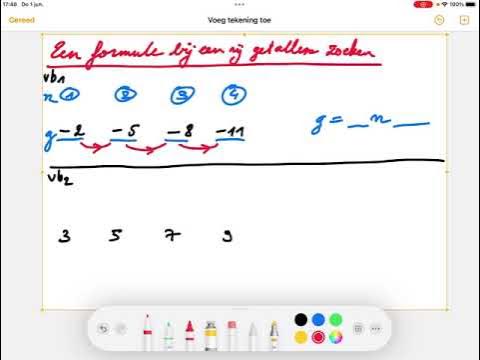pola bilangan fibonacci
Summary
TLDRIn this video, students are introduced to the Fibonacci sequence, starting with the numbers 1, 1, 2, 3, 5, 8, 13, and 21. The teacher demonstrates how each new number is the sum of the two previous numbers, explaining the pattern and formula (Un = Un-1 + Un-2). The lesson includes an example where students are tasked with finding the next two numbers in the sequence (34 and 55), reinforcing the concept. The video concludes with a call to subscribe for more lessons on mathematical topics.
Takeaways
- 😀 Introduction to the Fibonacci number sequence and its significance.
- 😀 The Fibonacci sequence starts with the numbers 1, 1, 2, 3, 5, 8, 13, 21, etc.
- 😀 To generate the next number in the sequence, sum the last two numbers.
- 😀 The first two numbers in the Fibonacci sequence are both 1.
- 😀 The sequence continues by adding the two previous numbers together.
- 😀 For example, 1 + 1 = 2, then 1 + 2 = 3, 2 + 3 = 5, and so on.
- 😀 The general formula for the nth term in the Fibonacci sequence is: UN = UN-1 + UN-2.
- 😀 A practical example is provided: the next two numbers in the sequence 11, 23, 58, 13, 21 are 34 and 55.
- 😀 The process of generating Fibonacci numbers involves simply adding the last two numbers in the sequence.
- 😀 The tutorial concludes by encouraging viewers to subscribe and follow the channel for more lessons.
Q & A
What is the Fibonacci sequence?
-The Fibonacci sequence is a series of numbers where each number is the sum of the two preceding ones. It starts with 0 and 1, and the sequence progresses as 0, 1, 1, 2, 3, 5, 8, 13, 21, 34, and so on.
How do you generate the Fibonacci sequence?
-To generate the Fibonacci sequence, you start with 0 and 1, and then repeatedly add the two previous numbers together to get the next number in the sequence.
What is the formula for finding the n-th term in the Fibonacci sequence?
-The formula for finding the n-th term in the Fibonacci sequence is: UN = UN-1 + UN-2, where UN-1 and UN-2 are the two previous terms.
What are the first few terms in the Fibonacci sequence?
-The first few terms in the Fibonacci sequence are 0, 1, 1, 2, 3, 5, 8, 13, 21, 34, and so on.
How do you calculate the next term in the Fibonacci sequence?
-To calculate the next term in the Fibonacci sequence, simply add the two previous terms together. For example, 8 + 13 = 21, and then 13 + 21 = 34.
What are the next two numbers in the sequence starting with 1, 1, 2, 3, 5, 8, 13, 21?
-The next two numbers are 34 and 55. This is found by adding the last two terms: 13 + 21 = 34, and 21 + 34 = 55.
Why is the Fibonacci sequence important?
-The Fibonacci sequence appears in various areas of mathematics, science, and nature, such as in the growth patterns of plants, the branching of trees, and even in the arrangement of petals in flowers.
What is the role of the first two numbers in the Fibonacci sequence?
-The first two numbers, 0 and 1, serve as the starting points of the sequence. All subsequent numbers are generated by summing the two previous terms.
How can we express the Fibonacci sequence in a formula for any term n?
-The Fibonacci sequence can be expressed in the formula: UN = UN-1 + UN-2, where UN is the n-th term, and UN-1 and UN-2 are the two preceding terms.
What was the final output of the Fibonacci sequence in the example provided?
-In the example provided, the next two terms after 1, 1, 2, 3, 5, 8, 13, and 21 are 34 and 55.
Outlines

Этот раздел доступен только подписчикам платных тарифов. Пожалуйста, перейдите на платный тариф для доступа.
Перейти на платный тарифMindmap

Этот раздел доступен только подписчикам платных тарифов. Пожалуйста, перейдите на платный тариф для доступа.
Перейти на платный тарифKeywords

Этот раздел доступен только подписчикам платных тарифов. Пожалуйста, перейдите на платный тариф для доступа.
Перейти на платный тарифHighlights

Этот раздел доступен только подписчикам платных тарифов. Пожалуйста, перейдите на платный тариф для доступа.
Перейти на платный тарифTranscripts

Этот раздел доступен только подписчикам платных тарифов. Пожалуйста, перейдите на платный тариф для доступа.
Перейти на платный тарифПосмотреть больше похожих видео

What is the Fibonacci Sequence?

Understanding The Fibonacci Spiral

Unit 1 Lesson 1 Practice Problems IM® Algebra 2TM authored by Illustrative Mathematics®

Geometric Means Between Two Terms | How to Insert? | Grade 10 MELC

Een formule voor een rij getallen zoeken

Finding factors of a number | Factors and multiples | Pre-Algebra | Khan Academy
5.0 / 5 (0 votes)
